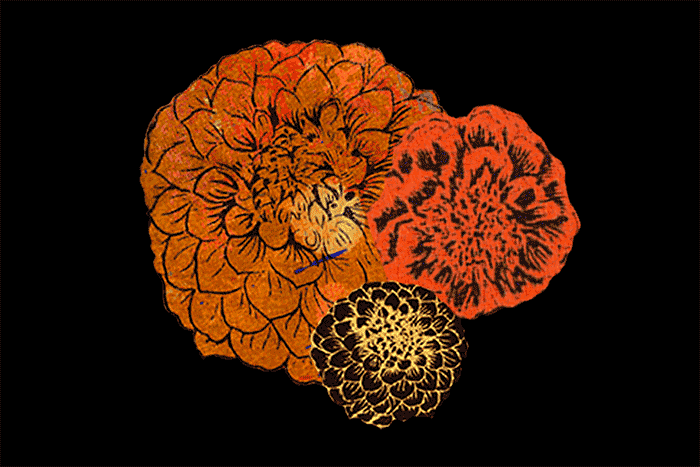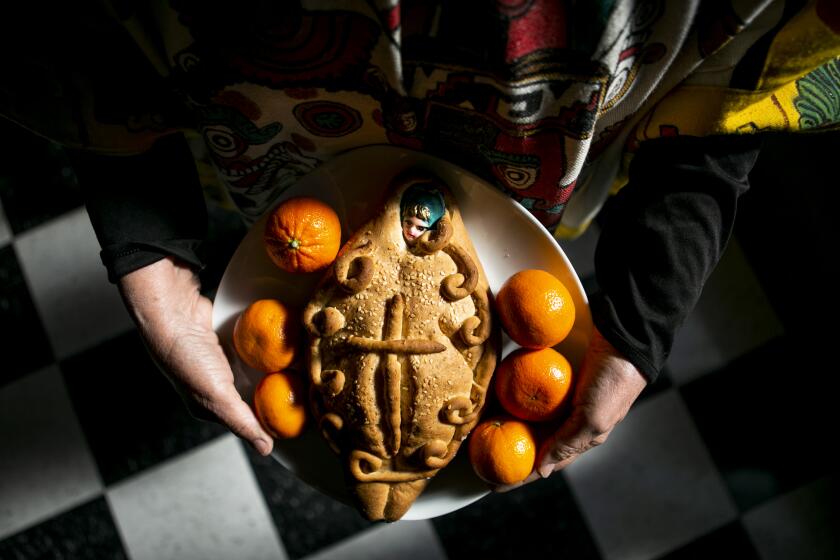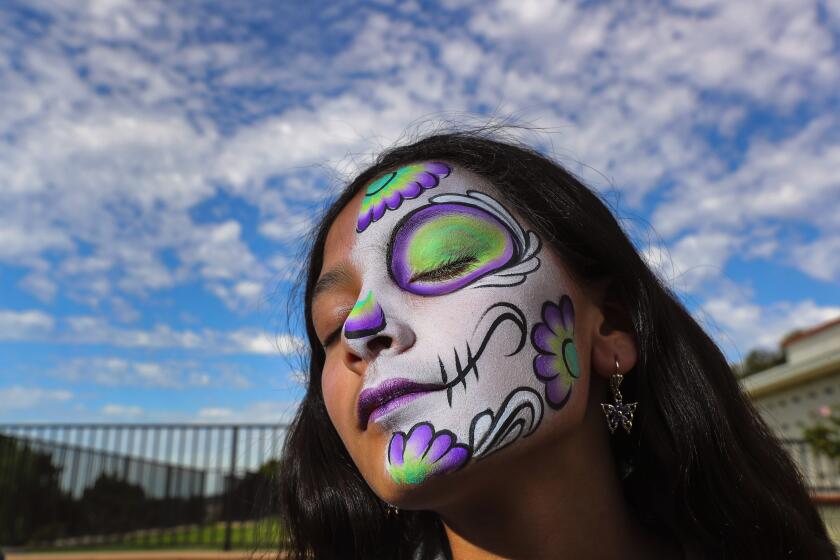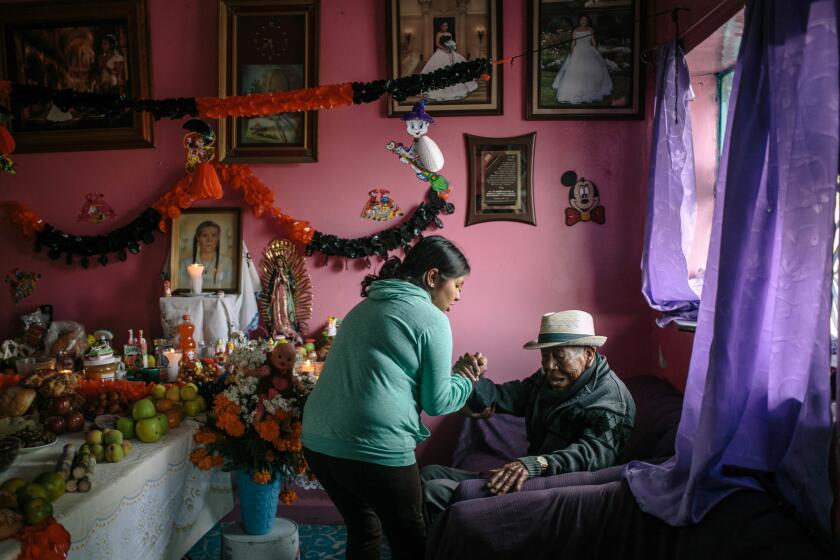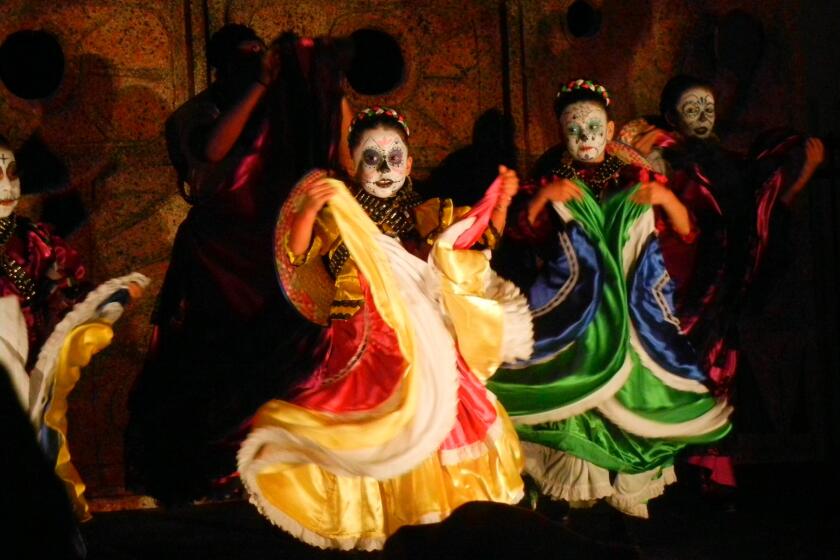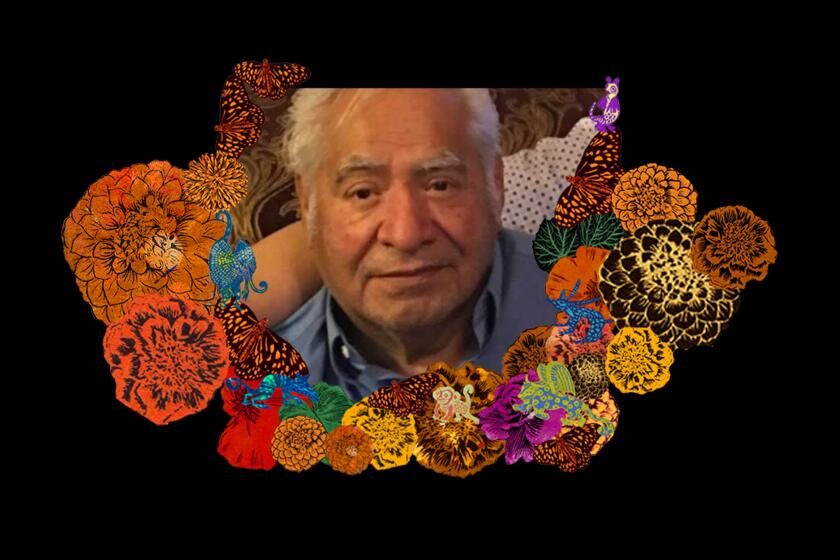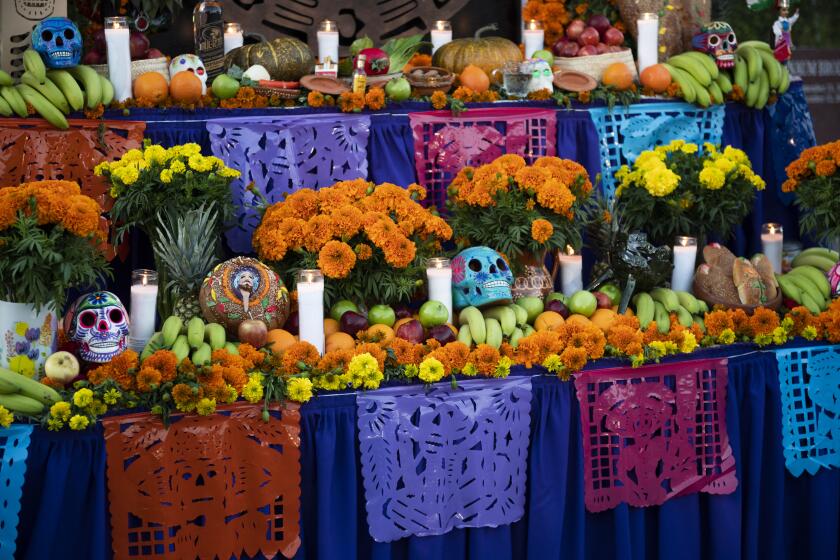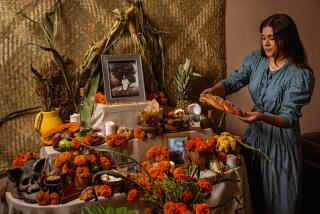
Folk artist Ofelia Esparza, L.A.’s most admired altar maker, reminds a somber city of the meaning of Día de los Muertos. Hint: It’s not Mexican Halloween.
- Share via
“We all suffer three deaths.” Ofelia Esparza, the East L.A. altarista, or altar maker, was remembering her mother’s words.
“The first death is the day that we give our last breath, the day that we die,” said Esparza one recent evening in Boyle Heights as she and her daughters prepared for Day of the Dead. They were making orange paper flowers, the blooms crinkling loudly, taking shape in their hands. “Our second death is the day that we’re buried, never to be seen on the face of the earth again, which sounds very final.
“But the most final, the most dreaded, terrible death of all,” she said, “is to be forgotten.”
It was as if Esparza was hearing it once more now, this maxim repeated around her as she was growing up. The phrases, like her traditions around Día de los Muertos, echo across decades of building offerings for departed souls, at home and out in the public. “And for her, it was an obligation to remember,” Esparza said of her mother, Guadalupe Salazar Aviles. “That’s why we need to keep doing this, and pass it on to our children.”
Sprightly and small-figured, speaking with an elder’s even command at 89 years old, Esparza is one of the most revered visual folk artists in California, if not the country. She is credited with helping expand appreciation of Day of the Dead, a once-intimate observance with Indigenous roots that now transcends cultural boundaries and faces growing commodification in U.S. popular culture.
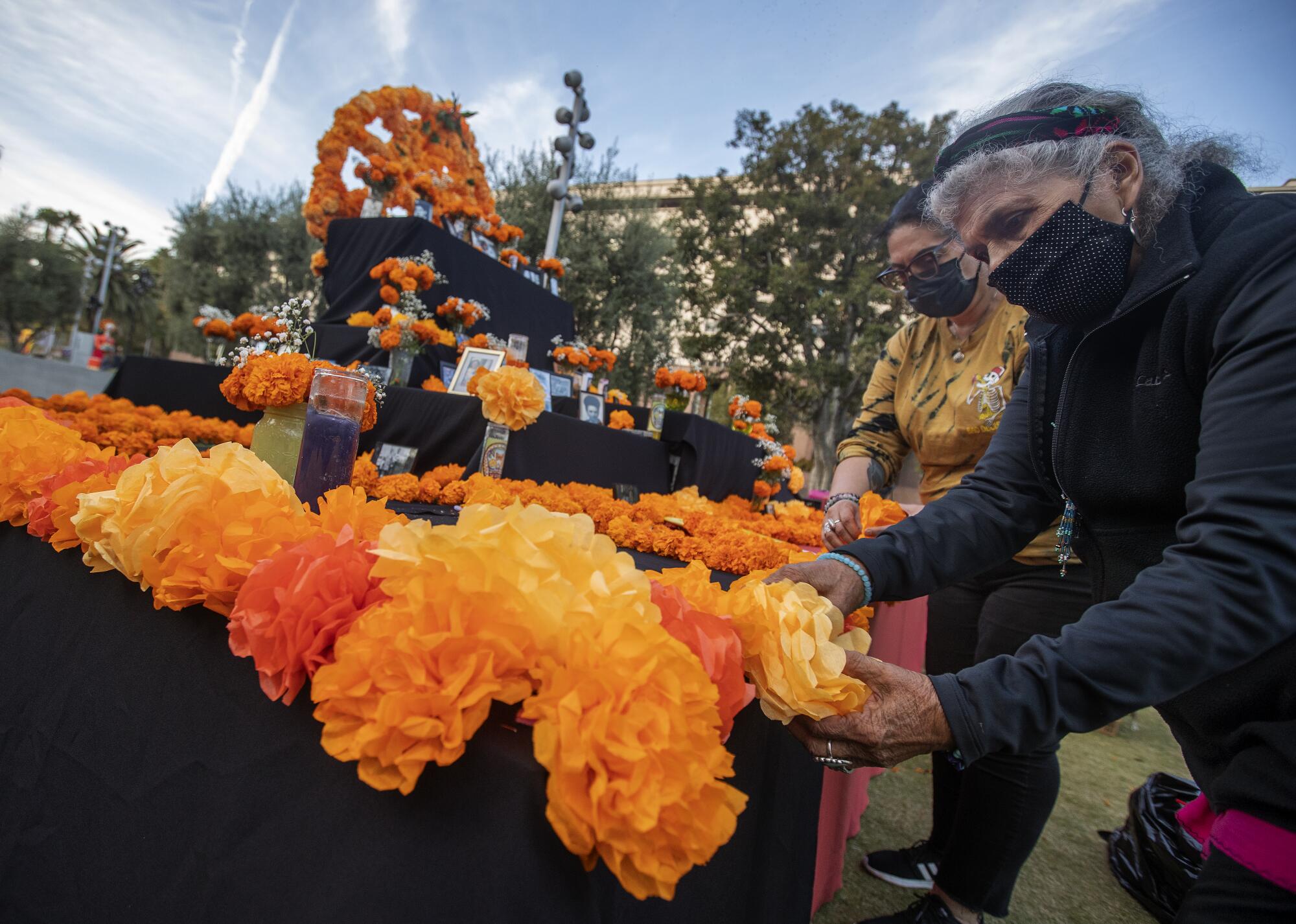
For her decades spent preserving the observance’s meaning through practice and oral tradition, Esparza in 2018 was awarded the prestigious National Heritage Fellowship by the National Endowment for the Arts. She’s been called a national “treasure,” whose altars seemingly channel the sentiments of an entire community.
As Los Angeles prepares to observe Day of the Dead on Nov. 1 and 2, the second under the somber fog of the coronavirus pandemic, time spent with Esparza as she built the city’s main public altar results in a reminder. At its core, the tradition is a pitched battle.
Forgetting, Esparza said, is what Day of the Dead is fighting.
Inspired by those found at Grand Park and the Hollywood Forever Cemetery around this time of the year, we’ve created our own communal digital altar.
“Otherwise, it becomes Mexican Halloween or another holiday, another firework holiday — I mean, that doesn’t mean that you can’t have fireworks for Day of the Dead.”
She smiled. “I’m sure in Mexico they do.”
In East Los Angeles, where Esparza was born in 1932, Muertos was always an interior ritual. Her mother made ofrendas, or altars, only three other times a year: “Holy Saturday, Our Lady of Guadalupe, and Christmas, or nacimientos.”
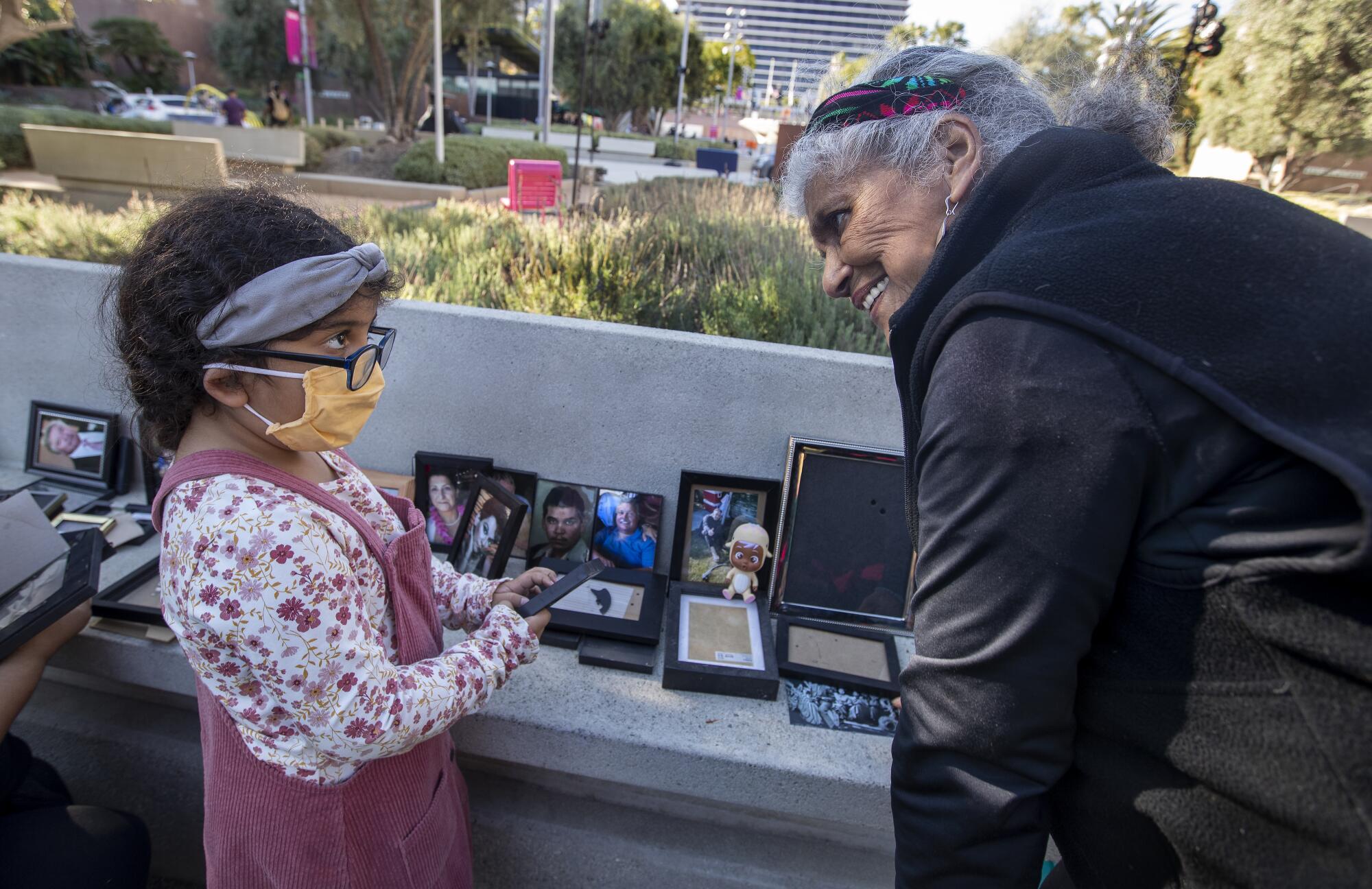
Now, with the help of three of her nine children — Rosanna, Elena and Xavier — she erects altars all over. It’s a busy time. From altar to altar, schools to community centers, even at malls or before local television news crews, they build and share the tradition’s essential elements.
As they work, Esparza and her daughters tend to mention “Mama Lupe” or “Mama Pola,” the women in their maternal line in Mexico who taught them what they do now: to adorn the ofrenda with flowers, candles, photos, a glass of water and favorite foods of the deceased.
A UCLA expert explains the role tamales, bread, chocolate and more play in honoring those departed on Día de los Muertos.
Their primary project in recent years has become the L.A. County community altar, made at Grand Park on behalf of the arts institution Self-Help Graphics & Arts. The Esparza family has been making it since 2013 for the annual Noche de Ofrenda.
“Doing the ofrenda itself is, for me, the main event,” Esparza chuckled while laying flowers on the afternoon before opening day. “This is what I look forward to, and it doesn’t matter where it is — that’s what we share, is the altar.”
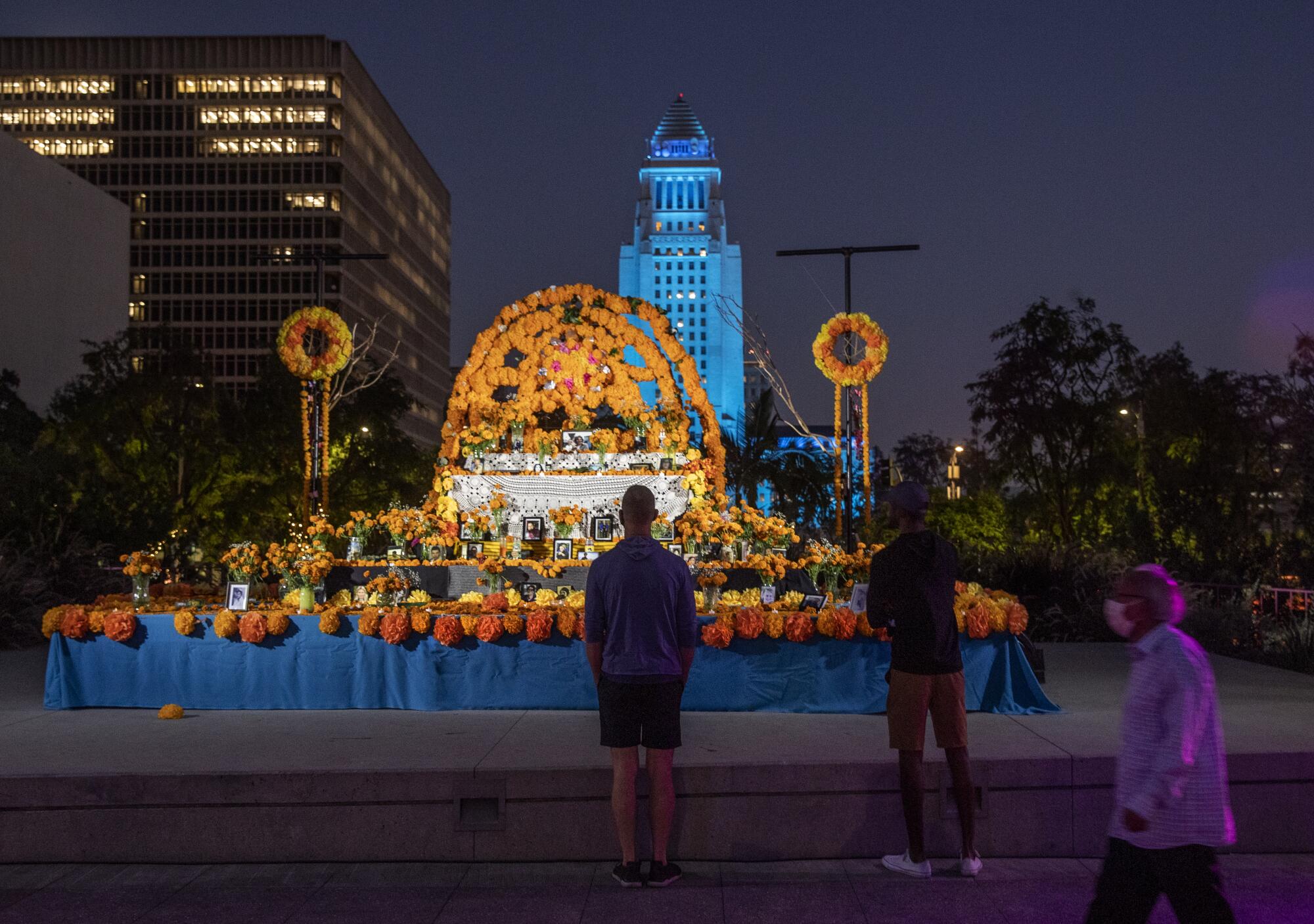
Her life as an altarista began in East Los Angeles, just a few blocks from where she lives today, near her daughters. Her family honored traditions from the Purépecha lands that are now known as the state of Michoacán in Mexico; the Esparzas are from Huanímaro, just across the state line in Guanajuato.
One day, Ofelia walked past Self-Help Graphics in East L.A. and stepped in. Sister Karen Boccalero, the driven and charismatic nun who founded the center, asked her if she knew anything about Día de los Muertos.
“I said, ‘Yeah, my mother…’ And she didn’t even let me finish,’ Esparza said. “‘OK. You come Saturday, and you’re going to do a workshop.’ And that was the beginning. That was 1979.”
The workshops and ofrendas soon became a Self-Help tradition. Along with budding iterations at Galería de la Raza in San Francisco and other cultural spaces from the Chicano Movement era in the state, Day of the Dead eventually seeped past the barrio.
Now, tequila labels sell special Day of the Dead editions and Mattel makes a hot-selling Day of the Dead Barbie. By the time Pixar released an animated film inspired by the tradition, the 2017 hit “Coco,” commercialization was already entrenched, with big-brand stores selling calavera-like decorations and Halloween costumes.
When Disney initially sought to trademark the phrase “Day of the Dead,” sparking significant public backlash, Ofelia and Rosanna were among the cultural luminaries who were asked to advise on the film that would eventually become “Coco.”
“We were greeted by the director, the producer and the screenwriter. And they were gushing over Mama,” Rosanna recalls. “And the first thing they said is, ‘We really hope you like the bridge.’”
Día de los Muertos is a Mexican holiday that more and more Americans observe. How did it become big here? Spoiler: The answer isn’t “Coco.”
Turns out, the bridge motif in the film — a gleaming path of marigold petals linking the worlds of the living and the dead — was inspired by a concept Ofelia and Rosanna frequently share: The ofrenda is a sort of bridge between worlds. The makers of “Coco” made the sound of footsteps on the bridge like the crinkling of paper marigolds and papel picado now.
In the film, the main character, Miguel, also learns about the “three deaths.”
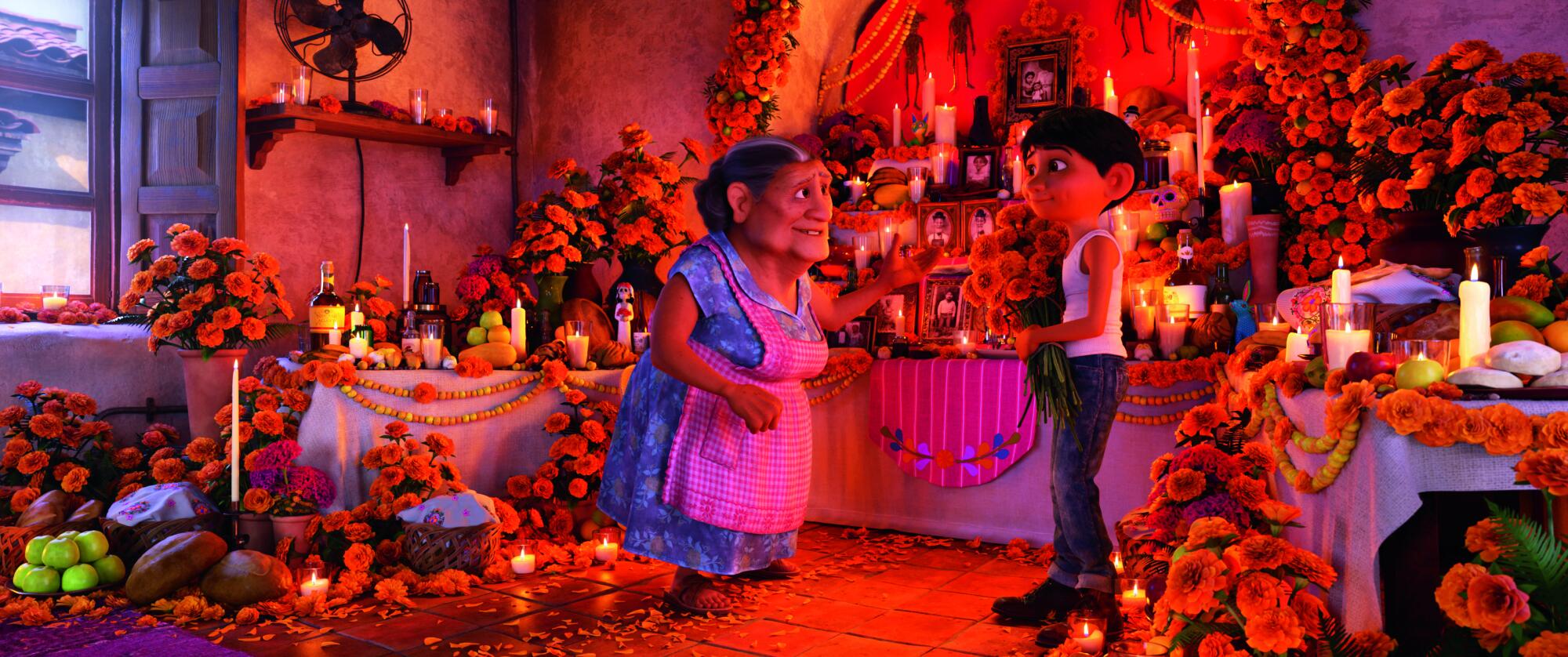
Building an ofrenda is a way to honor the dead — and to contemplate what awaits us all?
At Grand Park on a recent Friday, the Esparza women and a dozen or so volunteers were busy assembling the giant altar, covering the various levels with sheets of black cloth and attaching an arch of marigolds to crown their handiwork.
Ofelia was in the thick of it, carefully directing each step as the altar took shape. She just needed a bit of help on someone’s elbow or arm to get up and down.
Elena at one point burned white sage to cleanse the space. Traditionally, a resin known as copal would be burned, “but this is what grows here, so I’m going to use what’s local,” she said.
She likened the smoke to a “duster that cleans the cobwebs off your spiritual body. It’s just nice, and afterwards you feel a little lighter.” She smiled. “So why not? We want to be at our best. We want to clean up, before we say hello.”
Celebrations for Día de los Muertos in Los Angeles this weekend include block parties and exhibits.
Marigolds, or cempasúchiles, are a key ofrenda element, and the Esparzas and volunteers placed them in vases or arranged them with maroon amaranth petals into vibrant patterns.
Framed reproductions of photographs of the deceased, brought by community members, followed. Water in glasses for the souls to drink.
“My mother would say, Vienen de tan lejos, they come from such a long journey, they’re going to be thirsty when they come to our ofrenda,” Ofelia said.
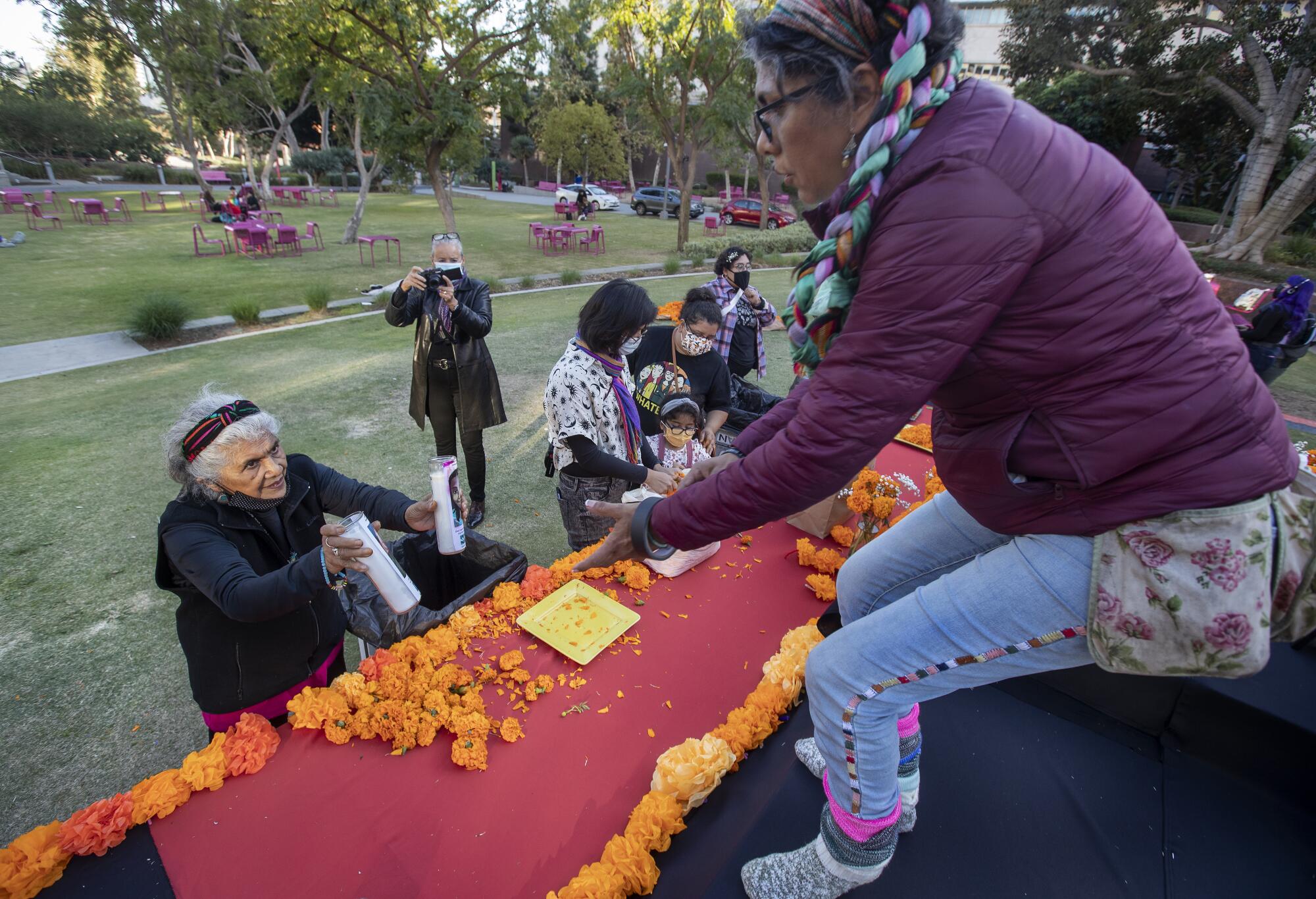
The next day, Oct. 23, the space opened its lawns for the event, part of a slew of outdoor public Día de los Muertos gatherings that now dot SoCal, the state and the entire country. The sweep of the park downslope from the Music Center toward City Hall was alight with marigolds and altars of different expressions and themes.
One ofrenda, by artist Consuelo G. Flores, honors Tomás Mejía, the union organizer who was shot and killed this year while attempting to protect a resident at Park La Brea, where he worked. An altar remembers transgender people who have passed. Another recalls victims of COVID-19 in Los Angeles County, which now number more than 26,500.
Angelenos are observing Día de Muertos during a global pandemic that has devastated Latino communities everywhere. Here is how the city is honoring its victims.
Ty Washington walked up with his young son, in Dodgers gear, and placed a photo of a man in a U.S. serviceman’s uniform; it was his great-grandfather, named Booker T. Washington, of Shreveport, La. He placed the photo on the community altar built by the Esparzas, joining others.
Washington said his ancestor was a veteran of World War II who moved to Mission Hills after serving. He said his great-grandfather raised him.
“I grew up in the northeast San Fernando Valley, so I’m very familiar with Día de los Muertos, but I wanted to bring my son, to see what altars look like,” said the 37-year-old city worker.

When I think of Día de Muertos, I think of my grandfather.
“I feel honored to be able to share my great-grandfather with others, not only as an Angeleno, as an African American, and as a product of the northeast San Fernando Valley,” Washington said.
Esparza sat on a concrete bench behind the altar, wearing a brilliant purple huipil-style poncho and a crown of multicolored flowers.
“I just love it,” she said.
“Everything changes, todo se acaba, and then it starts new again. Just like — I guess, not our life — but the altar itself, everything on it: the flowers, the candles, the papel, everything is ephemeral, just like our life,” she said. “But it might as well be beautiful and colorful, una ofrenda florida, con color.
“So enjoy life, make it colorful.”
As she looked on, others added photos to the altar or just stood back to admire and reflect. With colors, flowers and invocations of their names, those who’ve suffered two of the three deaths, for now, marked one more year without being fully forgotten, just as Ofelia Esparza expects.
Día de los Muertos (Day of the Dead) is Nov. 1 and 2, 2021. Here’s what goes into building an ofrenda, or altar, for a deceased loved one.
More to Read
The biggest entertainment stories
Get our big stories about Hollywood, film, television, music, arts, culture and more right in your inbox as soon as they publish.
You may occasionally receive promotional content from the Los Angeles Times.

